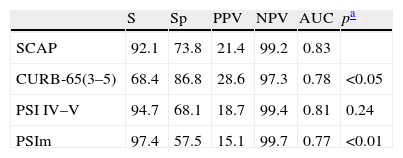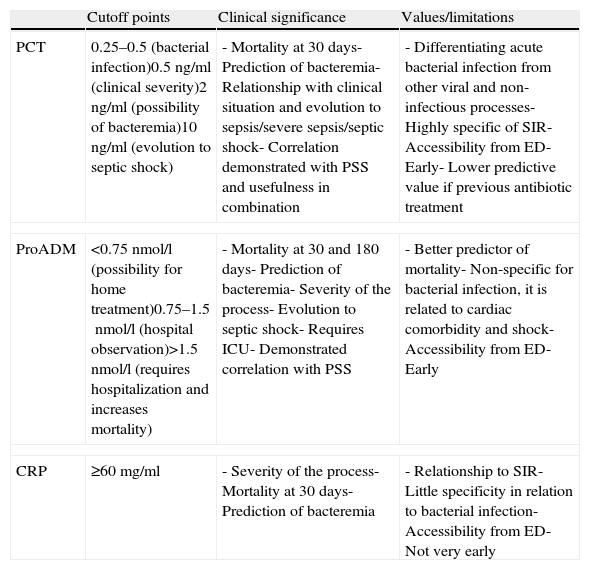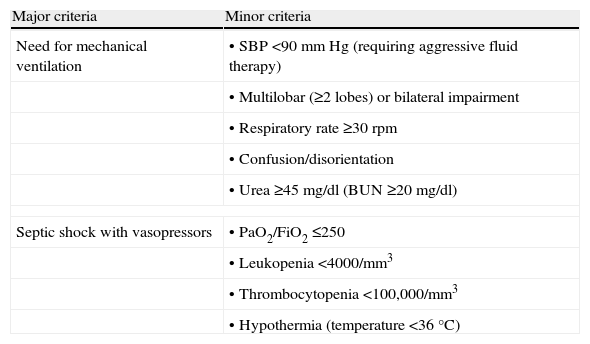Community-acquired pneumonia is the leading cause of death (10–14%) from infectious disease and the source of many sepsis and septic shock cases attended in the emergency departments. There is great variability in the admission rates (22–61%), and 10–20% of such admissions have to be done in the intensive care unit. The correct determination of need for admission (when), admission site (where) and burden of delivered care (how) will determine the patient's prognosis, request for basic and microbiological studies, antibiotic regimen (via and duration), clinical follow-up intensity and, consequently, the use of socio-health resources (costs). This article aims to orient decision-making, taking into account the new trends in prognostic evaluation tendencies and the current alternatives to the classic hospital admission.
La neumonía adquirida en la comunidad constituye la principal causa de muerte (10–14%) por enfermedad infecciosa y origina gran parte de las sepsis y shock sépticos atendidos en los servicios de urgencias. Existe gran variabilidad en sus tasas de ingreso (22–61%), y de estos, el 10–20% lo hace en una unidad de cuidados intensivos. Determinar correctamente la necesidad de ingreso (el cuándo), la ubicación (el dónde) y la intensidad de cuidados requeridos (el cómo) va a condicionar el pronóstico del paciente, la solicitud de pruebas básicas y estudios microbiológicos, la pauta antibiótica (vía y duración), la intensidad de observación clínica y, a la postre, la utilización de recursos sociosanitarios (costes). Este trabajo pretende orientar en la toma de estas decisiones teniendo en cuenta las nuevas tendencias en valoración pronóstica y las alternativas a la hospitalización convencional.
Article
Diríjase desde aquí a la web de la >>>FESEMI<<< e inicie sesión mediante el formulario que se encuentra en la barra superior, pulsando sobre el candado.

Una vez autentificado, en la misma web de FESEMI, en el menú superior, elija la opción deseada.

>>>FESEMI<<<










